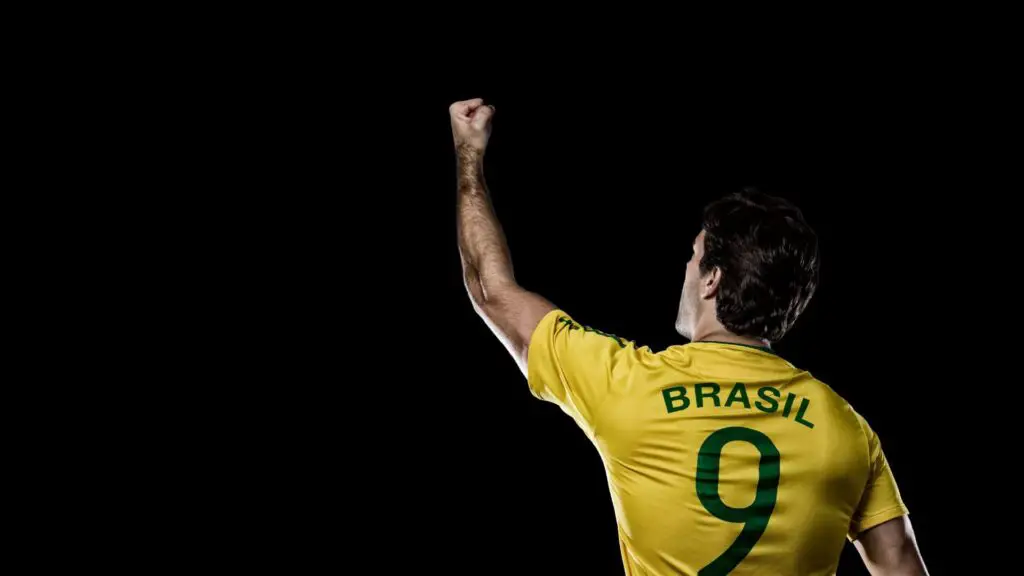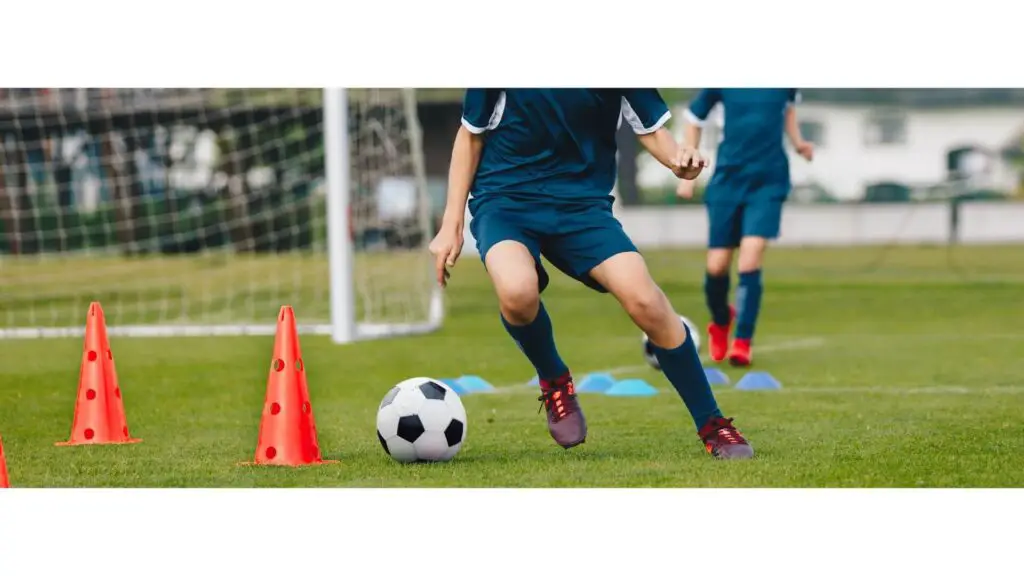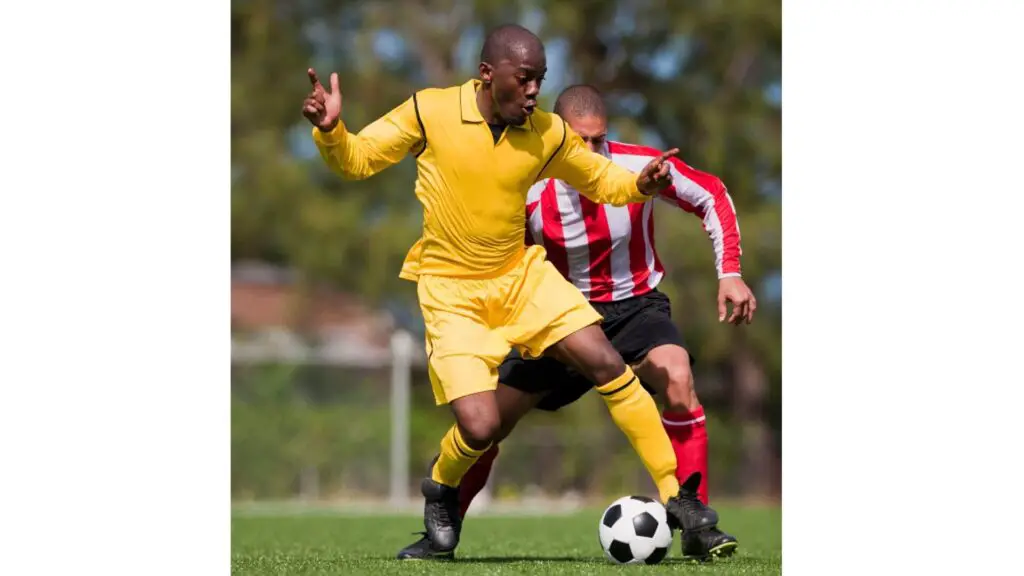Soccer/football, often referred to as “The Beautiful Game,” is a sport that celebrates diversity and skill, not just height.
While towering figures might dominate some aspects of the game, short players possess a unique set of advantages that can be harnessed to excel in some positions on the field.
In this article, we delve into the best soccer positions that are particularly well-suited for shorter players.
If you’re a vertically challenged player aiming to leave your mark on the pitch, read on to discover the positions that could turn the tide in your favor.
Table Of Contents
- Top 4 Best Soccer Positions for Short Players
- Understanding the Role of Short Players
- Technical Training for Short Players
- Tactical Adaptations: Crafting a Winning Strategy
- Versatility in Positional Play: A Swiss Army Knife Approach
- Incorporating Set Pieces: Making an Impact on Dead Balls
- Building a Strong Support System with Small Players
- Overcoming Physical Challenges
- Life Lessons from Soccer/Football
- Advice for Young Players: Chase Your Dreams, Defy Expectations
- Final Thoughts
Top 4 Best Soccer Positions for Short Players
1. Central Midfielder

Central midfielders are the engines of the team, dictating the flow of the game, creating opportunities, and shielding the defense.
Short players often excel in this role due to their agility, quick thinking, and tight ball control.
Picture the likes of Xavi Hernandez and Luka Modrić, who have shown that stature doesn’t define a midfielder’s impact. Their low center of gravity and nimble footwork allow them to weave through opponents effortlessly, distributing the ball with surgical precision.
As a shorter player, embrace your ability to turn on a dime, leaving defenders in your wake and setting up your team for success.
So, center midfielder is the top of the list as the best soccer position for short players.
2. Winger
Wingers are known for their explosive bursts of speed, dribbling skills, and crossing accuracy.
Short players can redefine this position by leveraging their agility and close ball control.
Consider the legendary Arjen Robben, whose pint-sized frame didn’t deter him from becoming a world-class winger.
Short players can hug the touchline, dart past defenders, and deliver pinpoint crosses that can unlock even the most stubborn defenses.
Being closer to the ground can also enhance your balance, enabling you to execute sudden changes in direction that catch opponents off-guard.
Winger is also one of the best soccer positions for left-footed players.
3. Full Back
Modern soccer/football demands versatility from every player, and full backs are no exception.
Short players who possess a strong defensive mindset, tenacity, and speed can excel in this position.
While tall players might rely on aerial prowess to defend, short full backs can leverage their agility to outmaneuver opponents and win the ball back.
Imagine the thrill of stealing the ball from an unsuspecting attacker and igniting a counter-attack that leads to a goal.
Short full backs can surprise opponents by challenging their assumptions about height and defensive strength.
4. Second Striker

The role of a second striker requires an innate understanding of space, timing, and anticipation.
Short players who possess quick acceleration, exceptional positioning, and an eye for goal can flourish in this position.
The stereotype that strikers need to be towering figures is debunked by players like Sergio Agüero and Lautaro Martinez.
Coaches often pair a tall and short striker, designating one as the primary striker and the other as the secondary striker for a given game. We often saw it at Inter Milan with Lukaku and Lautaro.
Short second strikers can slip through defensive lines, create goal-scoring opportunities, and pounce on rebounds with lightning speed.
Embrace your stature as an advantage that allows you to dart into pockets of space that taller players might struggle to exploit.
Understanding the Role of Short Players
Technical Training for Short Players
Short players can maximize their potential by honing their technical skills through purposeful training.
Focus on drills that emphasize close ball control, quick changes of direction, and accurate passing.
Dribbling through cones in tight spaces simulates real-game scenarios and enhances agility.
Regularly practicing juggling can enhance your touch, control, and overall comfort with the ball.
Additionally, consider practicing one-on-one situations to develop the ability to outmaneuver opponents in confined spaces.
Tactical Adaptations: Crafting a Winning Strategy
For smaller players, strategy plays a pivotal role in outsmarting taller opponents. Embrace tactics that prioritize quick ball movement and fluid passing to exploit gaps in the defense.
Consider implementing a high-pressing game, forcing opponents into mistakes by swarming them with quick, agile players.
Tiny players can excel in counter-attacking styles, utilizing their speed to catch opponents off-guard.
To achieve victory, it’s important to tailor your team’s tactics to make the most of your individual strengths. This can help catch your opponents off guard and give you the advantage.
Versatility in Positional Play: A Swiss Army Knife Approach
Short players can boost their value by mastering multiple positions. This versatility confounds opponents and provides coaches with tactical flexibility.
Training across positions exposes you to diverse playing styles and enhances your understanding of the game.
For instance, a winger who can also play as a full back brings an added dimension to the team.
Embrace your ability to adapt and thrive in various roles, showing that size is no barrier to being an invaluable asset.
Incorporating Set Pieces: Making an Impact on Dead Balls
Small players can shine during set pieces by employing clever strategies.
On corners, focus on near-post flick-ons or darting runs to disrupt defenders’ positioning.
For free-kicks, consider low-driven shots to exploit the wall’s jump, catching the goalkeeper off-guard.
Capitalize on your agility by becoming an elusive target during throw-ins.
By mastering the art of set pieces, you can add an unexpected edge to your team’s attacking repertoire.
Building a Strong Support System with Small Players
In soccer, teamwork and communication are vital. Small players can foster a strong support system by forming seamless partnerships with teammates.
Communicate effectively on the pitch to coordinate movements and cover spaces. Forge connections with taller players to create a balanced team dynamic.
==>> You can also read my article about the best soccer positions for tall players here.
Remember, the collective effort of the team propels success, and your contribution, regardless of height, is indispensable to the puzzle.
Overcoming Physical Challenges
Height-related challenges can be overcome with smart tactics.
When marking taller opponents, focus on disrupting their balance and timing rather than direct confrontation.
Use your low center of gravity to gain leverage and position yourself effectively. Adapt your defensive approach based on your strengths, showcasing that strategic thinking can outmaneuver physical disparities.
Life Lessons from Soccer/Football
Soccer offers lessons that extend beyond the field. Embrace teamwork as a reflection of collaboration in life.
Resilience in the face of defeat echoes the challenges life presents.
Discipline in training teaches the value of consistent effort.
Just as soccer teaches us to rise after a fall, life rewards perseverance. Embrace these lessons to not only become a better player but a better person.
Advice for Young Players: Chase Your Dreams, Defy Expectations
For young, aspiring players, height should never dictate your aspirations. Look up to little athletes who have conquered the sport.
Focus on developing your skills, working harder than anyone else, and embracing your uniqueness.
Soccer is a celebration of diversity, and your journey can inspire others to follow their dreams.
Keep in mind, the path to success is paved with dedication, passion, and the unwavering belief that your height doesn’t define your destiny.
Final Thoughts
In the world of soccer, the height is just one of the many factors that contribute to a player’s success.
Short players have consistently proven that technique, intelligence, and determination can overcome any physical limitations.
As you embark on your soccer journey, remember that your stature can be your secret weapon.
Whether you’re orchestrating play as a central midfielder, blazing down the wing, defending with determination, or seizing goal-scoring opportunities as a second striker, your short stature can be your greatest asset on the field.
So, lace up your boots, channel your inner dynamo, and make your mark on the Beautiful Game.
You should also read the best soccer positions for slow players.

